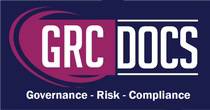What Is NIST SP 800-53?
NIST SP 800-53, created by the National Institute of Standards and Technology, is like a rulebook for keeping digital information safe and secure. It gives detailed instructions on how to protect data and computer systems from potential risks and cyber threats. In this overview, we'll explore the basics of NIST SP 800-53, understanding how it works as a reliable guide for organizations and individuals to ensure the safety and resilience of their digital assets in an ever-changing online world.

What Is NIST SP 800-53?
NIST SP 800-53, also known as the National Institute of Standards and Technology Special Publication 800-53, is a set of security controls and guidelines developed by the United States federal government. The publication provides a comprehensive framework for securing and managing information technology systems, particularly in government agencies, but it is also widely used in other sectors such as healthcare and financial services.
The purpose of NIST SP 800-53 is to help organizations effectively manage risks associated with the operation and use of information systems. It provides a catalog of security controls and guidelines that organizations can use to protect their information and systems from a wide range of threats, including cyber-attacks, natural disasters, and human errors.
The publication is organized into multiple control families, each addressing a specific area of security. These families cover a wide range of topics, including access control, risk assessment, incident response, and system and communication protection. Each control family includes a set of security controls that organizations can use as a baseline to establish their security posture. These controls are categorized as either management, operational, or technical controls, and they are designed to be flexible and scalable to accommodate organizations of different sizes and types.
NIST SP 800-53 is regularly updated to reflect advances in technologies and evolving threats. The latest version, Revision 5, was released in September 2020, and it introduces important changes, such as a focus on proactive defenses, supply chain risk management, and privacy protection. Organizations are encouraged to stay up to date with the latest revisions and adjust their security practices accordingly.
Exploring NIST SP 800-53 Standards
The purpose of NIST SP 800-53 standards is to establish a common framework and set of guidelines for managing and securing information systems. These standards are applicable to both federal and non-federal organizations and cover various aspects of information security, including risk assessment, security control selection, implementation, and monitoring.
The publication consists of several key components, including:
- Security Control Families: NIST SP 800-53 organizes security controls into families based on their objectives. Some of the control families include access control, incident response, system and communications protection, and security assessments.
- Security Controls: The standards define a set of baseline security controls that organizations should implement to protect their systems. These controls are categorized into three impact levels based on the potential impact on an organization if a security breach were to occur.
- Control Baselines: NIST SP 800-53 provides multiple control baselines that organizations can choose from based on their specific needs and requirements. These baselines serve as a starting point for organizations to customize and tailor the security controls to their environment.
Benefits of Adopting NIST SP 800-53 Standards
By adopting and implementing the NIST SP 800-53 standards, organizations can benefit in several ways:
- Enhanced Security: The standards provide a comprehensive set of security controls that help organizations strengthen their overall security posture and protect against a variety of threats.
- Compliance and Risk Management: Adhering to NIST SP 800-53 standards can help organizations meet compliance requirements, such as the Federal Information Security Modernization Act (FISMA). The standards also support effective risk management practices by providing a structured approach to identifying and mitigating security risks.
- Industry Recognition and Reputation: Implementing NIST SP 800-53 standards demonstrates an organization's commitment to information security and can enhance its reputation among customers, partners, and stakeholders.
Conclusion
NIST SP 800-53 Standards serve as a vital compass for digital security. This rulebook, crafted by the National Institute of Standards and Technology, is like a trusted guide, offering clear instructions to protect our digital world from potential risks and cyber threats. By following these standards, organizations and individuals create a robust defense, ensuring the safety of their data and computer systems. NIST SP 800-53 stands as a key ally in navigating the complex landscape of cybersecurity, promoting a secure and resilient digital environment for everyone in our interconnected world.






